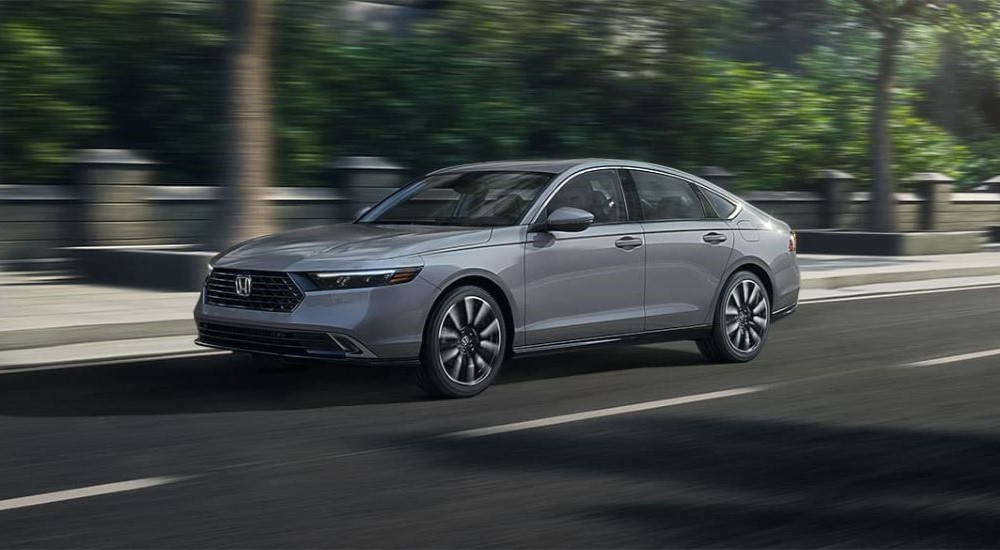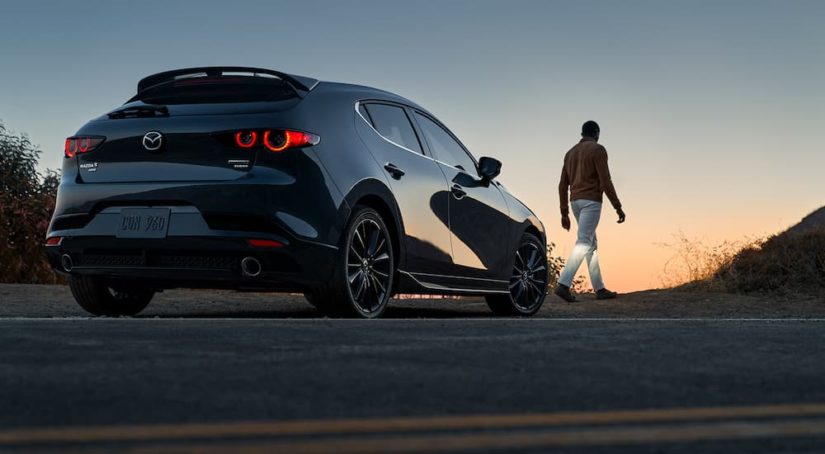When buying a used vehicle, you typically have specific features in mind. This means narrowing down your selections to what works for your daily driving habits and your budget. Some of the more affordable vehicles out there are used hatchbacks and sedans. They make excellent starter vehicles, family vehicles, and daily drivers. Which one do you go with, and why? If you’re looking for used cars for sale within the smaller car segments, this article can help you decide whether a five-door hatchback or a four-door notchback sedan is the better option for you.
The Difference Between a Hatchback and Sedan
A hatchback is considered a five-door vehicle, since they typically have two doors on each side of the main body and a hatch access in the rear, hence the name “hatchback.” The hatch is considered a fifth door, since it opens up and provides you with instant access to the rear compartment, not unlike a minivan, station wagon, or an SUV.
A sedan, however, has four doors and a trunk. The trunk access is typically not connected to the rear seats like a hatchback. Although many sedans let you fold down the back seats to extend your cargo space, when the seats are up the trunk is its own separate storage compartment, as opposed to being a cargo area behind the rear seats. Sedans typically have a notchback design as well, though some modern designs blur this line a bit.
Important Questions To Ask
Features like resale value, capacity, accessibility, and features are all important when deciding which kind of vehicle to go with and what size. All of these different facets can alter what the vehicle is worth and whether or not it’s something that accommodates short or long term plans for vehicle ownership.
One of the important questions you should be asking yourself is what size vehicle you’re looking for. Hatchbacks and sedans come in different sizes. Most newer hatchbacks are available as subcompact, compact, and midsize vehicles, while sedans are available as subcompacts, compacts, midsize, and full-size vehicles. The reason for the difference in sizes is because size-wise, larger hatchbacks simply turn into crossovers, station wagons, or SUVs.
If you’re looking for something small and affordable, both a sedan and a hatchback can easily accommodate your needs. However, if you wanted something affordable and slightly larger, you might consider a full-size sedan. If capacity and size are a factor, a hatchback typically works well. It’s more compact in size, but still offers enough space to comfortably seat five people.
Another important question to ask is what class of vehicle you’re looking for. Are you looking for a family vehicle? A daily driver? An executive vehicle? A sports car? Both hatchbacks and sedans can fulfill these roles, but some are better at certain roles than others. For instance, there are hot hatches that give you a lot of power in a small package, with great maneuverability and handling that you might not get from a sedan. Meanwhile, sedans are available in luxury and executive iterations. There are some luxury hatches, but they’re not as plentiful in the used market as used luxury sedans, which are available in more sizes than what you might find with hatchbacks.

Feature Differences
One of the main reasons you may consider one vehicle type over another is due to the features. So what are the feature differences between a hatchback and a sedan? The biggest and most obvious difference is the fact that the hatchback forgoes a trunk, so you have the added space connecting where the trunk would be with the back seat area. Overall, you get more cargo volume to work with when it comes to a hatchback, and far more versatility for the usage of that space, even in a small car.
A good example is the Toyota Corolla and the Toyota Corolla Hatchback. The standard Corolla, a sedan, has a total cargo volume of 13.1 cu.ft. of cargo volume, whereas the Corolla Hatchback has 17.8 cu.ft. The hatchback has no trunk lid to truncate its cargo capacity. The hatchback opens up wider cargo volume capacity for carrying larger items you wouldn’t be able to fit in a sedan.
However, there are drawbacks to the hatchback configuration. By being separated from the passenger compartment, items in the trunk are better protected from the outside world than in a hatchback. Anything stored in your hatch area may be on display to the world through the car’s windows. While some hatchbacks have covers over the cargo area, they are only that–covers, not a true separation. They still don’t provide the physical separation between compartments that a sedan’s trunk does. This could be especially useful if you’re transporting sensitive items, such as alcohol or weapons.
Additionally, sedans often have a quieter interior than hatchbacks. Cargo rattling around in the trunk is not as noisy in the passenger compartment as it is in a hatchback. Additionally, the muffler and exhaust outlet is often under the rear cargo area in both types of vehicles. A sedan’s trunk acts as an additional baffle, further reducing engine noise before it enters the passenger compartment. A hatchback cannot do this because the cargo and passenger areas are connected.
Performance and Maneuverability
In terms of performance and fuel economy, a hatchback typically has the same gas mileage as a sedan, so you’re not giving up range with either one. In terms of maneuverability and handling, these are often comparable between the two types of vehicles, mainly because manufacturers share so many parts between them to save money.
However, hatchbacks are often slightly smaller than a comparable sedan, because they don’t have a trunk space sticking out behind the passenger compartment. You can see clearly all the way to the back corners of the car, making it easier to maneuver in tighter spaces. If you consistently drive in an urban environment where bumper-to-bumper traffic is frequent, or you have to parallel park often, a hatchback might be a better option for you.

Resale Value
In the past, hatchbacks didn’t sell well in North America, with drivers strongly preferring sedans instead. This has changed now that crossovers and SUVs are all the rage. Some manufacturers no longer offer any sedans in North America at all, because people simply weren’t buying them. Today, people may be more willing to consider a hatchback than a sedan, because it bears more resemblance to the larger SUVs that most people drive today.
This entirely boils down to how popular each of these vehicles is in your area. Differences in resale also vary depending on the availability of used cars where you plan on reselling the vehicle. Different regions have different regional prices for cars, and that also varies per model year, trim, color, brand, and features.
A luxury sedan comes with more upscale features and higher quality materials. Likewise, a hot hatch comes with a more powerful engine and performance-oriented parts such as sports tires and larger wheels. Additionally, the size will also determine the resale value. Depending on what’s popular and what’s not will determine if a subcompact, a compact, a midsize, or a full-size vehicle will be worth more or less when it’s time to trade up.
When it comes down to hatchbacks versus sedans, there’s really no right answer that fits every scenario. It’s more about what kind of car you want to drive, your price range, what features you are looking for. If you want a small, nimble, affordable car, a compact hatchback is a good option. If you want a quiet, roomy, reliable car, a midsize sedan is a good option. You can basically narrow down your choices between the two based on the factors that best accommodate your daily driving needs and your preferences for a car that you enjoy driving.



